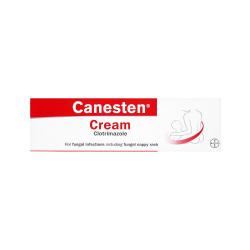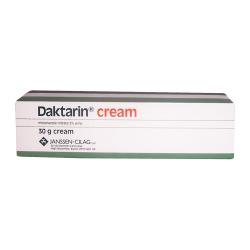- Private & confidential service
- Genuine medication
- All-inclusive service - No hidden fees
- Next day delivery
- Fungal skin infections
Fungal skin infections
Start your consultation

- Soothing treatment
- Works for excessive sweat
- Soothes rashes and discomfort

- Soothes fungal infections
- Used for external symptoms
- Prevents fungus growth

- Relieves itching
- Soothes redness
- Treats multiple conditions

- Fights dandruff & fungal infections
- Soothes scalp irritation
- Reduces flaking and itching

- Powerful antifungal properties
- Fast symptom relief
- Effective against athletes foot & jock itch

- Triple-action treatment
- Topical relief for itching and irritation
- Kills fungal infection

- Antifungal + steroid combination treatment
- Relieves itching and inflammation
- Treats fungal infections at the source

- Identify and treat skin conditions
- Convenient from your home
- Results in 1 working day
Fungal skin infections
Fungal skin infections are very common and can occur on any part of the body. They occur when fungi invade and grow on the skin, usually in warm, moist areas such as between the toes, under the breasts, and in the groin.
These infections are common and typically mild but can cause itching and irritation.
You can order treatments for fungal skin infections online from HealthExpress and learn more about the condition below.
Topics
How common are fungal skin infections?
Fungal skin infections are extremely common. It is estimated that almost one billion people worldwide suffer from fungal infections of the skin, hair, and nails.
The prevalence of fungal infection may also differ by type for example, ringworm commonly occurs in children and young adults while athlete’s foot and jock itch are more common in males than females.
What are fungal skin infections?
Fungal skin infections are infections that affect the outer layers of the skin. They are classified based on their location on the body.
Some common fungal skin infections include:
Ringworm (Tinea corporis)
What it is: Despite its name, ringworm is not caused by a worm but by a fungus. It mainly affects the trunk, neck, arms and legs. It can also appear on the face and scalp, on the scalp it can cause patchy hair loss.
How it looks: It is often called ‘ringworm’ as the lesions are circular, with a well-defined, raised border and a clear center.
Jock itch (Tinea cruris)
What it is: Jock itch gets its name as it's common in athletes and people who sweat a lot. It is caused by fungi known as dermatophytes.
How it looks: This type of infection causes an itchy rash on the genitals, groin, thighs and perianal skin. The rash may also cause a burning sensation.
Athlete's foot (Tinea pedis)
What it is: This is a fungal infection that affects the skin on the feet, especially in between the toes. It more commonly occurs in males and young adults. It usually spreads through direct contact or by walking barefoot in communal areas like locker rooms, showers, and swimming pools. Diabetics or people who wear closed footwear for long periods of time are also at higher risk of developing athlete’s foot.
How it looks: It can cause peeling, cracking, and scaling of the skin in between the toes, as well as an itching, stinging or burning sensation. Athlete's foot can also affect your soles or sides of your feet or cause redness of the skin.
Male yeast infection (Candidal balanitis)
What it is: This is an inflammatory fungal infection caused by a yeast called Candida. It usually occurs in uncircumcised men and appears on the foreskin of the penis.
How it looks: It appears as a red, itchy rash on the head of the penis. Some patients may experience a white discharge.
Pityriasis versicolor (Tinea versicolor)
What it is: This is a yeast infection causing discolouration of the skin. It is more common in hot, humid climates and affects people who sweat heavily.
How it looks: Flaky, discolored flat patches that may be lighter or darker than the surrounding skin. The patches can be scaly, and usually appear on the chest, upper back, upper arms, or neck.
What are the symptoms of fungal skin infections?
The symptoms of fungal skin infections may present slightly differently based on the type of infection and where it occurs on the body.
 |
Ringworm Causes red patches that are ring-shaped with a well defined border. The patches may have a slight scale. |
 |
Jock itch Causes a red or brown itchy rash around the groin or thighs. The skin may be irritated, or burn. |
 |
Athlete’s foot Presents as peeling, cracking, and scaling of the skin between the toes. It can be itchy and sometimes smell. |
 |
Candidal balanitis Causes a red, itchy rash on the head of the penis. |
 |
Pityriasis versicolor Flaky discoloured patches appear on the chest and back. The patches may be pink, or pale in those with darker skin. |
What causes fungal skin infections?
The main groups of fungi that cause superficial fungal infections are dermatophytes (tinea), yeasts, and moulds. These infections are contagious and can occur through the following ways:
- Direct contact with an infected person or animal
- Sharing personal items (e.g. clothes, towels, or shoes) with an infected person
- If the fungi that normally live in or on your body grow out of control
Who is at risk of getting fungal skin infections?
Anyone can get a fungal skin infection as they are very contagious and can easily spread through direct or indirect contact with an infected person or surface.
People at higher risk of getting fungal infections include those who have:
- HIV
- cancer or take cancer treatments
- diabetes
- poor circulation
- a weakened immune system or take immunosuppressant medications
- other conditions affecting the skin (e.g. psoriasis or eczema)
Fungi thrive in warm or moist environments, which means you’re more likely to get an infection if you:
- live or work in a hot or humid environment
- wear tight-fitting clothing or shoes
- sweat a lot
- have skin folds that rub against each other
Certain professions and activities also increase the chances of infection:
- Athletes and gym-goers - Sweating for long periods of time and sharing equipment with infected people can spread fungi.
- Healthcare workers - These people may often be exposed to infected patients.
- Soldiers or factory workers - They may wear protective gear for long hours.
How are fungal skin infections diagnosed?
To diagnose fungal skin infections, your doctor may ask about your symptoms and possible sources of infection (e.g. daily activities). They will also visually examine your skin for signs of infection, such as redness, itching, scaling, or ring-shaped lesions.
If lesions cannot be identified visually, your doctor may take a sample of your skin to send to a lab to be examined under a microscope to find the cause.
For some fungal infections, a Wood’s lamp test (a special UV light) may help detect the presence of fungi.
How do you treat fungal skin infections?
The majority of fungal infections can be cured with topical antifungal treatments. However, severe or widespread infections may require oral treatment. One of our registered doctors will decide what medicine is best for you.
At HealthExpress, we offer a range of treatment options. Check out the comparison table below to see which treatment is right for you.
It is important to use the treatment that your doctor prescribes, even if your symptoms go away before you complete the treatment.
When should I see a doctor?
You should consult a healthcare provider if the infection:
- affects a large area of skin and is hard to control
- becomes painful, blistered, or infected
- is on your scalp or nails (these typically require prescription treatments)
- keeps returning
You should also speak to your doctor if you have used OTC treatments for 2 weeks with no improvement, or you have medical conditions such as diabetes or a compromised immune system.
How long do fungal skin infections last?
Fungal skin infections may persist for weeks to months without treatment, and can worsen or spread to other areas of the body over time. Fungal infections can also spread to nails, which take much longer to treat.
How can I prevent fungal skin infections?
To prevent tinea infections, it’s important to practise good hygiene. Some handy lifestyle tips include:
Personal hygiene
- Shower as soon as possible after getting dirty or sweaty
- Dry your skin well after washing (especially your skin folds)
- Wear clean, dry, cotton underwear
- Avoid sharing towels or other personal items with others
- Keep your nails short and clean
Clothing and footwear
- Wear loose-fitting clothes made from breathable fabrics
- Wear clean socks and shoes
- Change socks and workout clothes immediately after exercising
- Let shoes air out between wears
Public places
- Avoid walking barefoot in communal areas (e.g. swimming pools, public bathrooms, showers)
- Use your own mat at gyms or yoga studios
Can I buy fungal skin infection treatments over-the-counter?
Yes, you can buy some topical fungal treatments over-the-counter (OTC) however, stronger options, such as tablets, require a prescription.
Can I buy treatment for fungal skin infections online?
Yes, you can buy both Canesten and Daktarin topical treatments online at HealthExpress. All you have to do is follow these simple steps:
- Choose the medicine that you think will work the best for you.
- Fill out our online consultation form. It should only take 5-10 minutes.
- Our doctor will review the form and determine if the treatment is best for you.
- If they approve, the doctor will issue an e-prescription for the treatment.
- Our licensed pharmacy will dispatch the treatment in discreet packaging to your doorstep with free delivery.
Why should I choose HealthExpress?
HealthExpress is trusted by thousands of users in the UK for its safe and convenient service. Here’s why:
- Experienced doctors manage your consultations and prescriptions.
- Online consultations, quick approvals, and discreet doorstep delivery add to the convenience.
- A supportive team is on hand to answer treatment-related questions or concerns.
- Patients can manage their prescriptions hassle-free through our secure platform.
Join thousands who trust HealthExpress for their healthcare needs and take control of your health today.
3 simple steps to get you started












